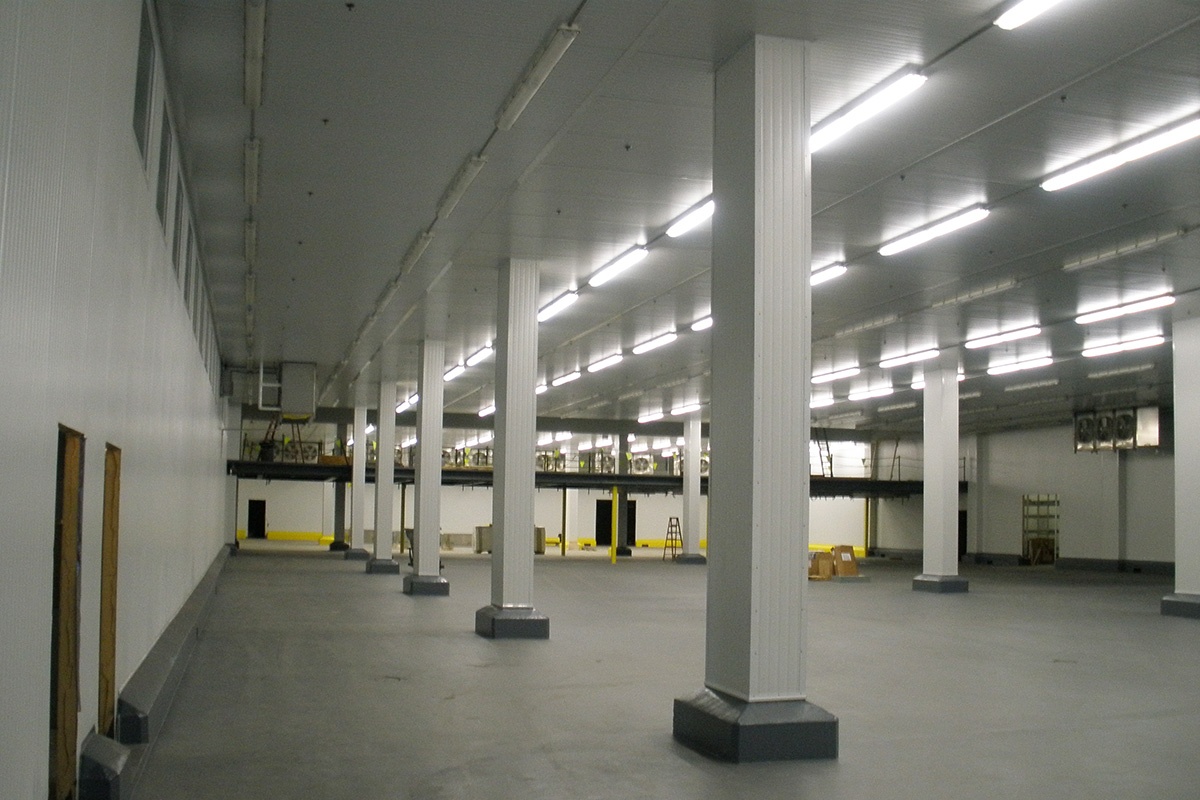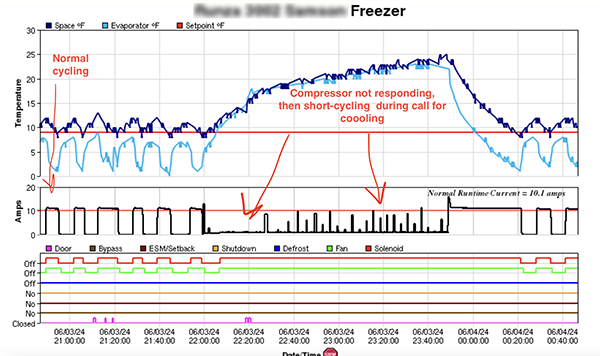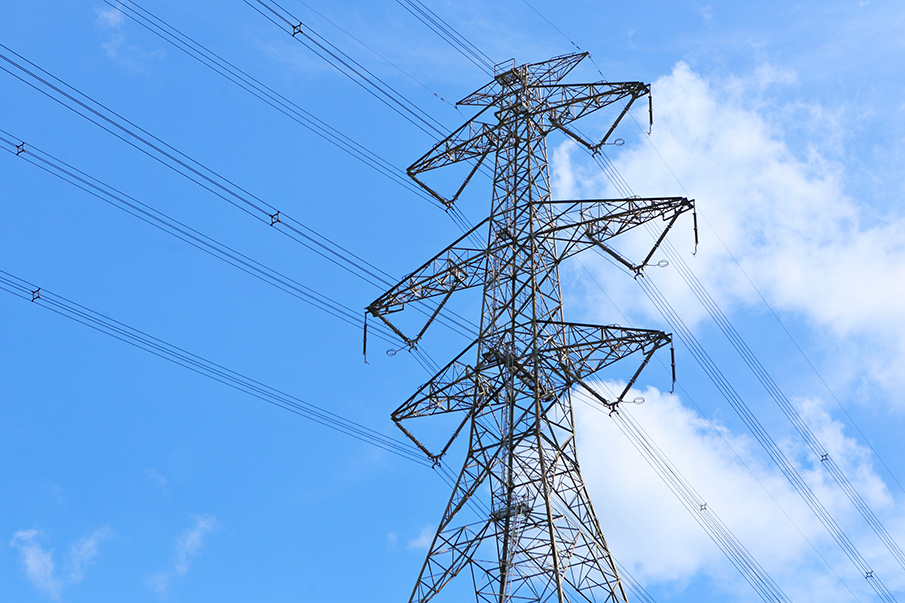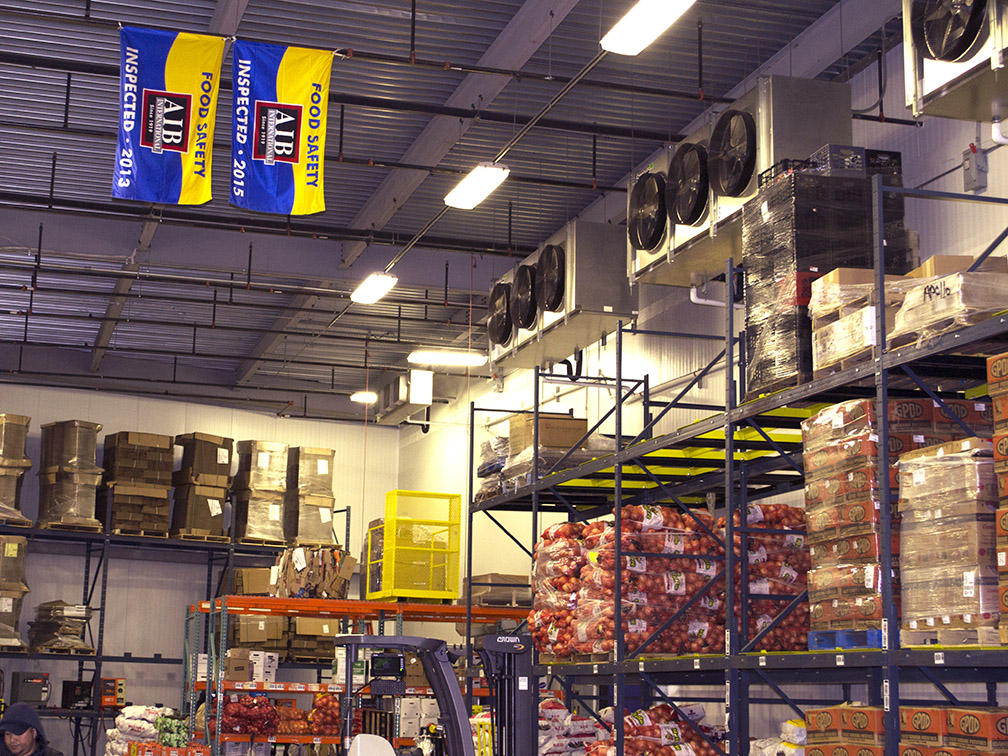In part one of this blog series, we sough to break down the various terms and descriptions for the sub-sections of what’s known as refrigerated space. In part two, we described the different lighting technologies commonly used in refrigerated spaces and compared them with more efficient LEDs. In part three today, we will highlight energy-efficient lighting’s impact on refrigerated load savings.
While upgrading lighting fixtures to more efficient LEDs is a practice that in-and-of-itself reduces electrical usage, many are not aware that this measure also bears an indirect effect on refrigerated load savings. Like motors and other physical components within a refrigerated space, lighting represents another thermal load the system must manage and account for.
This relationship is explained perfectly by the Global Cold Chain Alliance:
“Energy introduced into a temperature-controlled space as either light (or heat) must ultimately be removed by the refrigeration system. The power used by the lighting is the key to analyzing its impact on refrigeration load. All lights introduce heat into the environment, so by measuring the wattage of the light source, refrigeration load can be calculated.”
Working off of this reasoning, we must figure out the most efficient way to control the wattage to have the lowest possible heat introduced into the space. The lower the heat, the more savings we recapture through the energy efficiency measures.
There are two main ways this can be achieved: reduce the wattage of the fixture and/or control their on/off or dimming cycles. Preferably, this would be done through integrated refrigeration controls (such control systems exist today that allow for digital and automatic control of lighting as part of a larger, comprehensive solution – like NRM’s CoolTrol) or a building/energy management system. This can also be achieved through fixture-level sensors and controls.
In this context, LED technologies are the clear-cut option for having the most positive indirect effect on refrigerated load savings. Why? Because there are obstacles that result in using conventional lighting technologies to manage thermal load that are negated by using LEDs.
The challenges when using conventional lighting technologies to manage thermal loads:
As mentioned in part two of this series, the traditional technologies we are referring to are fluorescent, metal halide and high-pressure sodium fixtures. The Global Cold Chain Alliance explains the challenges these present as follows:
“These lights have warm-up issues that prevent them from instantly reaching safe illumination levels, and frequent on/off cycling shortens their useable life, so facility managers are not comfortable turning the lights off, lest they create a safety issue. In addition, cycling many HIF fixtures on/off in increments of fewer than 15 minutes voids the ballast warranty while abbreviating lifetime and accelerating re-lamping schedules.
Many facility managers attempt to manage this process in fluorescent fixtures by leaving half of the lamps in a fixture on, and adding after-market occupancy sensors. This is an expensive half-measure that adds cost to the installation and perpetuates the performance and energy issues; warm-up times are still insufficient, and they are paying to keep half of the lamps on all of the time.
The bottom line is that if you cannot cycle the lights on and off in small increments, and if you have to leave a larger percentage of lights on all the time, you cannot successfully meet lighting energy-savings goals or reduce thermal load.”
As you probably can tell, “control” of traditional technologies as a means for savings really isn’t a viable solution. While some traditional lighting options have lower wattage models, most – like fluorescents – possess higher wattage to purposefully overcompensate for the lower temperature impact on performance.
So how does an LED solution differ?
LED, as an alternative technology, offers a way to lower the thermal load through wattage savings without the fear of compromising performance. In many instances, the wattage reductions exceed 50% over traditional sources. The digital quality of LEDs allows for the simple integration of programmed dimming control and on/off timers or sensors. By having instantaneous full luminosity, warm-up times are also eliminated.
Qualifying and reporting the positive indirect effect on refrigerated load savings
If you are an end user who owns or manages a refrigerated space and are evaluating an energy-efficient lighting proposal, you should see a section in the proposal noting the kWh savings related to refrigerated load reduction.
Why is it important that this is shown on the proposal? Direct lighting savings alone do not tell the full energy story. Plus, many utilities actually incentivize the kWh saved in refrigerated load reductions so it’s important that you see every source of impact on those savings.
And how are the refrigerated load savings calculated? If you haven’t already done exhaustive research into this topic, here’s the long and the short of it: it varies. From state to state, and from utility to utility, each has their own way of calculating the totals. The easiest way to find out, for your particular savings, is to check with your state’s governing division or state utility.
Conclusion
- The reduced wattage of LED fixtures provides an unmatched indirect positive impact on refrigerated load savings when compared with traditional lighting.
- There are three methods for further increasing said impact: Fixture-level controls, integrating a comprehensive refrigeration control system, or having an energy/building management system.
- The refrigerated load savings (kWh) should be reported on any energy-efficient lighting proposal.
- Calculating refrigerated load savings varies from state to state and from utility to utility, so it’s recommended to check with your particular provider.




